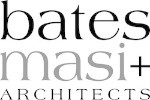
2014 Daniel J. Rowen Memorial Design Awards
—————————–
Honor Award / Architecture
Maziar Behrooz, Architect
Project: Arc House

In one of our initial meetings with our clients, we shared a picture of a small airplane hangar showing an uninterrupted interior space under an arched structure. We suggested this technology as a probable solution for their need for a voluminous and well-lit living space. We had several reasons to think this would be the right choice. Firstly, the corrugated galvanized steel technology of this building system is very cost effective. And, secondly, we were all seduced by the idea of a large column-less self-supporting canopy that enclosed all the public spaces of the house in a single large room.
Other reasons reinforced our suggestion. The landscape of the East End, where the property is located, is filled with ‘quonset-hut’ green houses. At the same time, there are numerous examples of experiments in architecture, like the ‘pinwheel house’ of Peter Blake or the Motherwell house & studio by Pierre Chareau. We were compelled, therefore, to explore more non-conventional yet efficient ways to create a single family home.
The site itself is nearly three acres and is surrounded by a tall canopy of pine trees. This gave us a natural spatial boundary that would allow the living spaces to be open and require less privacy. We countered the flatness of the site by creating a sunken courtyard and driveway. These allowed us to transform the lower level into a well-lit and habitable space. At the same time, they created a way for cool air from the lower level to be pushed up, through a large stairwell, and up into the arched living space — maintaining a moderate temperature.
One of our design challenges was to find a scale for the arch that would transform it from an industrial component into an intimate space. At a radius of 39′ with a peak ceiling height of 16′, we felt the building would be small enough to feel comfortable and yet have a sense of largeness associated with its uninterrupted ceiling curve. We made sure that the arch would visibly meet the floor on the inside and hover over the grade on the outside turning into a lighter element.
The arch contains the living, dining and kitchen areas in an open plan. A staircase, the kitchen counter and other low-height components define the space within it. The entry canopy to the arch and a few other components within it are at a height of 7′, creating a touchable lower plane within the larger structure.
To allow the client to be able to increase the number of bedrooms, we decided to house them in a flat roofed section, in the rear, made of structural insulated panels; the bedrooms are accessed through a connecting bridge. The layout is simple and efficient and can easily accommodate horizontal additions.
Geothermal and high-efficiency HVAC, glazing u-values down to .12, SIP paneling, and a green roof contribute to the lowering of energy costs.
Credits & Contact Information listed at end of Album

=================================================
Honor Award / Architecture
Roger Ferris, Architect
Project: Bay House

This new single family residence located on the Long Island coastline was designed with spectacular water views in mind while also considering issues of sustainability and the connection to local context. Our design maximizes natural daylighting, views and the interrelationship of interior and exterior spaces. This house is composed of two offset parallel wings aligned with the shoreline and connected with common circulation areas at each floor level. The primary living spaces are oriented to the water while support spaces face inland. The semi-detached study and pool cabana punctuate the east end of the northern wing and experience both views.
Our objective was to create a variety of dramatic living spaces within a small cluster of building forms. The lap pool is placed in a sheltered location, perpendicular to the shoreline. The pool aligns with and determines the location of an opening between building forms. This opening creates outdoor rooms which function as primary living spaces at both floor levels. On both sunny and windy days, these spaces between the building forms provide sheltered outdoor living areas.
The north elevation offers sweeping views of the coastline, with continuous glass walls extending the perception of interior space out to the continuous decks. The glass walls also allow sunlight into the open interior, while louvered screens and dual track motorized shades are activated depending on sun angle and time of day to control shading and privacy.
The high efficiency mechanical equipment, high-performance glazing, aluminum louvers, and closed cell foam insulation all meet stringent local energy efficiency standards, contribute towards HERS certification and ensure comfort. The low temperature radiant heating system is served by a geothermal heat pump. The mechanical equipment, shading, and lighting controls are all integrated through internet-based control systems. The landscape design follows xeriscape concepts with the use of local plant species to eliminate irrigation and unify the site with the local native landscape.
This five bedroom house is centered around an open plan kitchen with adjacent dining and living areas. These primary living areas are surrounded by satellite living areas and bedrooms which provide accommodations for the extended family or guests.
Credits & Contact Information listed at end of Album

=================================================
Merit Award / Architecture
Paul Masi, Architect
Project: Elizabeth II

Too often, architecture fixates on the visual sense, with little regard for the other faculties of perception. The location of this house, in the heart of a bustling resort town, demanded special consideration of the acoustic sense. Research in architectural acoustics drove the form, materials, and detail of the house, not only shielding the property from the sound of the village, but also manipulating interior details to create a unique acoustic character for the house, one that will instill lasting memories for the family and their guests.
The house is comprised of a series of parallel walls that provide layers of privacy and insulation from the sound of the village. The walls project beyond the living spaces and ascend in height, building from a human-scale wall at the entry to a high wall along the center of the house. The walls diffract the sound waves moving past them, casting an acoustic shadow over the property to create a quiet outdoor gathering area.
The walls are built with insulated concrete forms, a wall assembly nearly 20″ thick comprised of a poured concrete core that is continuous from footing to roof, wrapped in insulating foam that also serves as formwork during construction. These walls provide excellent thermal insulation and an extremely low sound transmission coefficient. Due to the strength of their concrete cores, the walls act as structural beams, enabling them to span over the gathering space at the center of the house and the covered deck.
The custom stainless steel clips that attach the wide cedar board siding to the walls were designed to prolong the life of the siding. Traditional wood siding eventually fails because the natural expansion and contraction of the wood is constricted by the screws or nails that rigidly fasten it in place, slowly pulling out the fasteners or splitting the wood. The spring-like clips, however, hold the boards in tension against the house while allowing freedom for the natural movement of the wood.
Inside, variations on the clips are utilized as robe hooks, cabinet pulls, and as hinges for an adjustable sound baffle in the central gathering space. The hinges hang cedar boards in front of a felt panel with spaces between them. Sound waves pass through the gaps between the boards, are trapped behind them, and absorbed by the felt. The hinges allow the spacing of the boards to be adjusted so the room can be acoustically tuned for intimate gatherings or boisterous parties. The stair is also tuned to create a subtle acoustic experience. The stair treads taper in thickness, changing the pitch of footfalls as one ascends from the woodshed in the basement, past the main floor with public spaces, guest room, and master bedroom, up to the childrens’ rooms on the upper floor.
The research of sound and how it affects our perception of space informed the details, materials, and form of the project. This approach to the design led to a richer and more meaningful home for the family.
Credits & Contact Information listed at end of Album
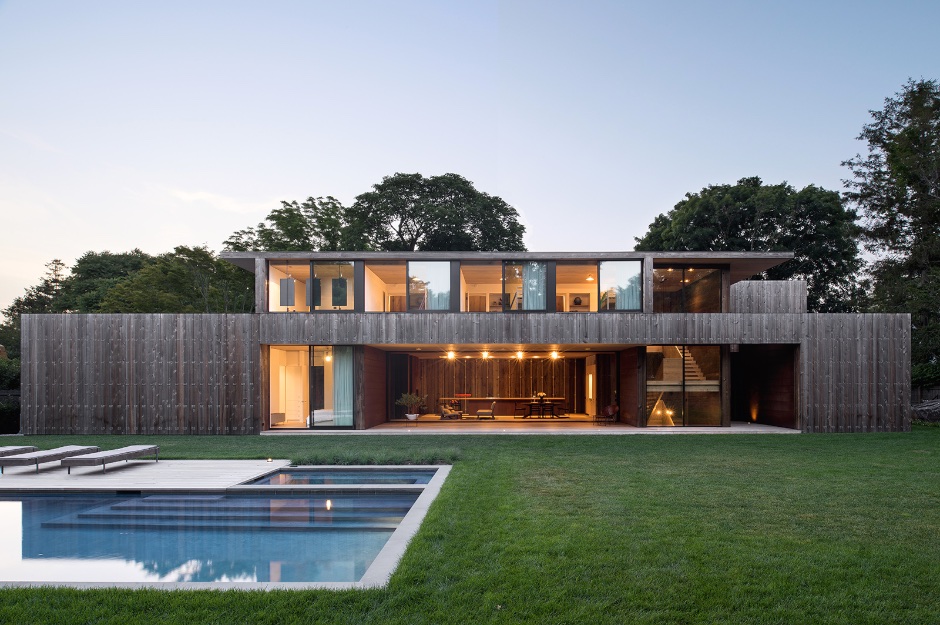
=================================================
Merit Award / Architecture
Stelle, Lomont & Rouhani
Project: Casa Lama

Located on the rocky coast of the Balearic Island of Mallorca in Santa Ponsa, not far from Palma, this family house is pushed into a steep hillside, celebrating its Mediterranean proximity. The design responds to the site’s foremost demand, which is to open itself up to the seascape. A succession of terraces modulates the terrain from the street level to the bottom of the site, defining areas in which the house ties in with spaces outdoors: a sculpture garden, a dining loggia, a sun terrace, and a pool.
The house operates on four levels, with most of the key living spaces and guest quarters on the ground floor, which spreads out to the southwest. Above this sits a first floor structure consisting of a master suite, a panoramic family room that opens to a porch and two bedrooms for the children. A rooftop terrace provides sweeping views of the Mediterranean with an outdoor kitchen, dining and sitting areas. The lower level section is primarily devoted to service rooms and a gym.
A clear framework of materials, with white stone on the lower level in direct contact with the ground, and an overhanging upper volume of horizontal wood articulate the design strategy. Operable shutters provide security, sun control and protection from winter storms.
Credits & Contact Information listed at end of Album

=================================================
Merit Award / Architecture
Maziar Behrooz, Architect
Project: Driftwood House
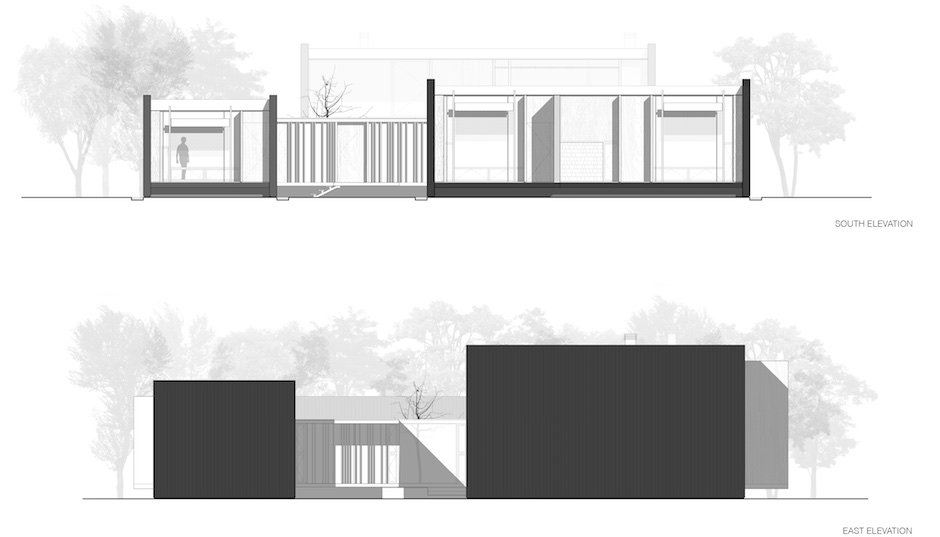
On the northeastern shore of Springs, New York, a hamlet in East Hampton, a short dirt road winds between tall pines and brings one to a small 1/2 acre lot that is perched 18′ above Gardiner’s Bay. It is an arresting experience to exit the tree-covered road and be confronted with an expansive cut of the sky, the bay, and a horizon line that is straddled with Gardiner’s Island. On the east and west sides, neighboring houses sit not too far away. These two extremes, complete openness on one axis and enclosure on the other, inform our design and its materiality.
An existing house on the lot, too deteriorated from long exposure to salt and humidity, is to be removed. And many interior wood finishes will be salvaged for re-use in the new house. In its place, a new 3,100 square feet house will include three bedrooms, a study, living spaces and intimate outdoor spaces and courtyards.
The natural beauty of the bay’s constantly shifting conditions, its deep variations in color, and the geometric purity of the horizon line, are the remarkable features of this site. Architecture, here, could do no more than to be witness. So our house sits with this phenomenal experience, weaving the line of the horizon through its spaces, slowly unveiling the views, with glimpses through layers and framed transparencies.
The house is split into three pods that are connected with a low-ceiling bridge. This grouping scales down the house in relation to the lot and is reminiscent of older settlements in the area.
Moving through the house one passes under overhangs, through vertical fins and between small courtyards. The effect is one of unveiling, the view is captured and released, culminating in a living space where two 18′ tall side-walls hold the horizon, sky, and bay.
A few small-scale inner courtyards, set in the center of the house, create sheltered outdoor spaces, away from northerly winds and allow direct southerly light to enter the living spaces; they also help maintain a level of privacy between the three inhabitants of the house. Nature can be harsh, and these spaces provide necessary relief when facing the bay may prove difficult.
On the east-west axis, the walls are devoid of openings, shielding the interior spaces from neighbors while directing the eye towards the horizon. These walls are made with Structural Insulated Panels and clad with charred cypress boards, prepared using the traditional Japanese Shou-Sugi-Ban technique; the charred wood provides a permanent protective shield against termites (a problem that effected the existing house) and requires nearly no maintenance.
Utilitarian spaces, bathrooms ,and closets are each boxed and stacked against a concrete wall that rises from the basement to the roof — one concrete wall in each pod, dividing the space and providing a sense of stability. Cedar and pine boards, recycled from the demolished house, are used to clad these boxes in an informal and non-luxurious manner. Electrical conduits and plumbing are surface-mounted for ease of access and to reveal the mechanics of the structure.
Special attention is given to the way the roof edge meets the glazed walls below it. The roof tapers down to a 2” edge, almost disappearing from view. We felt the expression of free-standing walls would be akin to masts of a ship, and maybe even in some manner, appear to be touching the sky.
Credits & Contact Information listed at end of Album

=================================================
Merit Award / Architecture
Maziar Behrooz, Architect
Project: insta_house

Living on the East End of Long Island with steadily rising property values is a challenge for many — both long time residents and young individuals and families. Many find it increasingly hard to own a home in an area in which they grew up or came to love as adolescents. Hence they are forced to move away to other towns with lower property values, leading to a demographic homogenization of the population.
Five years ago, to help reverse this trend, we embarked on an exploration of very affordable single-family residences and workspaces. In 2009, we built our first prototype for a double-height artist’s studio made of two recycled shipping containers perched on a concrete foundation. The project, at a cost of under $ 90,000, and located in Amagansett, was seen by many as an alternative to high-priced real estate. We received many inquiries from a wide swath of the public and became aware of the real need for very affordable housing in the ‘Hamptons’.
Working backwards, we set for ourselves a target price of $ 99,000. With careful design considerations, and minimal but critical design modifications, and by working pro-bono (not our partners), we have been able to achieve this target price. Our third round of estimates from two different fabricators have confirmed that our target price and the options below are realistic.
The base unit that we call the Container Studio is made of two 40′ containers on top of another two. The four unit assembly has a double height workspace, is fully finished and habitable and is roughly 900 sf.
An additional bedroom, walk-in closet, full bathroom and kitchen adds $ 30,000, and a second bedroom and bathroom $ 20,000 to the base cost.
We further searched for compelling and cost effective options: cold climate package $ 8,000; marine grade paint $ 8,000; furniture $ 9,000; appliances $ 9,000; technology $ 8,000.
The critical inclusion of a double-height workspace or living room creates a light-filled voluminous space (14′ wide by 19′ deep by 18′ tall) and transforms the containers into a spacious and workable room. Further, the interior has been designed to accommodate the functionalities of various inhabitants, from a single person, to a small family, from start-up homeowners to those who may need a weekend cottage. Finally, at the cost of $ 149,000, the two bedroom/two bathroom, 900 sf insta_house brings home ownership truly within reach for many.
The cost of delivery, site-preparation and installation can range from $ 25,000 to $ 45,000 depending on location and site accessibility.
Credits & Contact Information listed at end of Album.
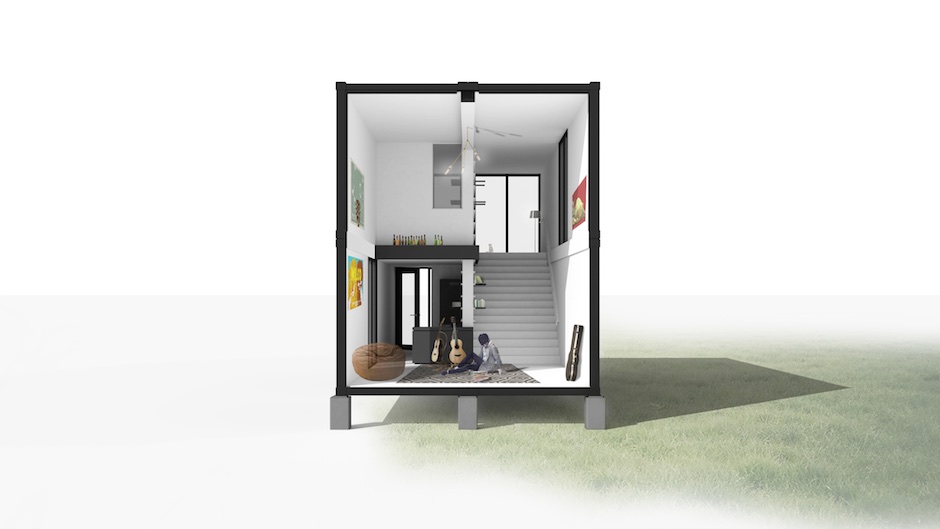
=================================================
Juror Award / Architecture
Paul Masi, Architect
Project: Pierson’s Way
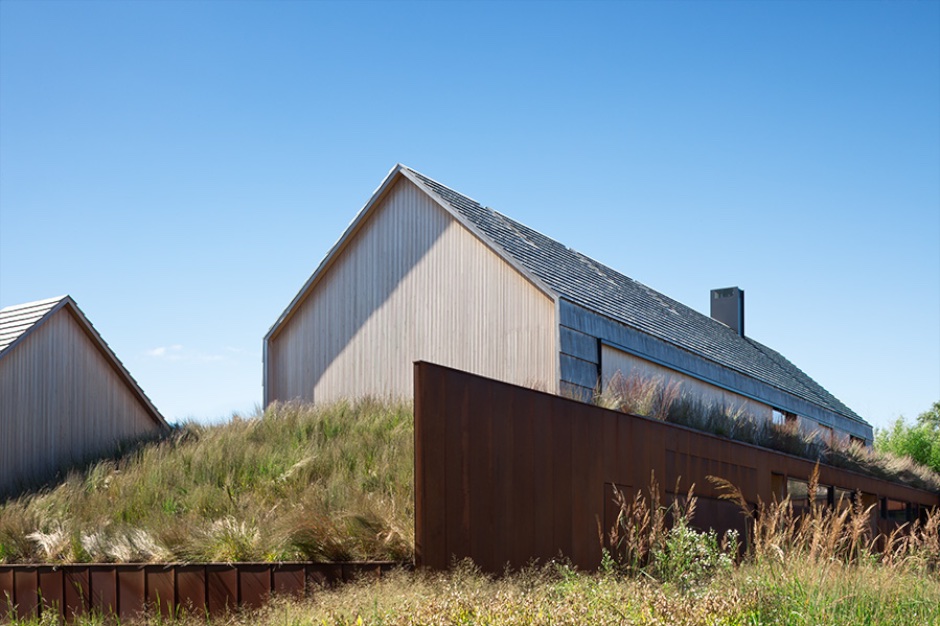
Located within a private oceanfront community established in the 19th century, this residence is for a young couple looking for a home that would accommodate their growing family and reflect their modern lifestyle. Due to its history, most houses in the neighborhood are more conservative in design and scale than surrounding contemporary oceanfront communities. As a result, the clients desired a modern home that would fit within its historic context while embracing the modest scale of the property.
The design meets these goals by referencing the nearby agrarian vernacular buildings, specifically gabled potato barns embedded in the ground. A unique structural system was employed to create a false ground plane that slopes up from grade to the second floor, masking the scale of the house when viewed from the street. The structure consists of 7″ thick glue-laminated wood beams supported by steel girders and columns. This structure eliminates the necessity of traditional wood framing and structural elements and was left exposed as the finished ceiling surface throughout the ground level spaces.
The unique structure allows for a number of design opportunities: the material transitions seamlessly from inside to outside as a 12′ by 90′ long cantilever, stair treads are cut from the same material to express its thickness, and cylindrical recesses are carved out of the wood ceiling to transform surface mounted fixtures into unique lighting elements. This method of carving continues throughout the design as casework and custom furniture. Most notably, the Family Room sofa is fabricated out of the massive glue-laminated wood beams and carved out to create side table and drink rails.
While the first floor is dedicated to guests and entertaining, the second floor is reserved for the family. The elevated ground plane that surrounds the family bedrooms is planted with native grasses. Within the plantings, intimate outdoor spaces are carved for small gatherings, including a fire pit and spa with views of the ocean. Sloping portions of the elevated ground plane include paths to connect the family ares with the more public entertaining ares on grade.
Materials traditionally used on agricultural buildings are selected for their low maintenance, durability, and ability to gracefully weather over time. Cedar and weathering steel are executed in nontraditional ways, Alaskan yellow shakes monolithically clad the roof and sidewalls. The shake coursing exposure is four times larger than the typical coursing to reduce th apparent scale of the house. The weathering steel references the corrugated steel often used on barn roofs. Weathering steel self seals to create a durable, low maintenance cladding. The warm, earthy tones of these materials blend with the weathered landscape that surrounds it.
Surrounding contemporary oceanfront communities are becoming known for their overdevelopment and disconnect from their surrounding environment. By referencing the local vernacular and elevating the ground plane, this large house is rooted within the landscape and becomes a cohesive addition to the neighborhood.
Credits & Contact Information listed at end of Album.
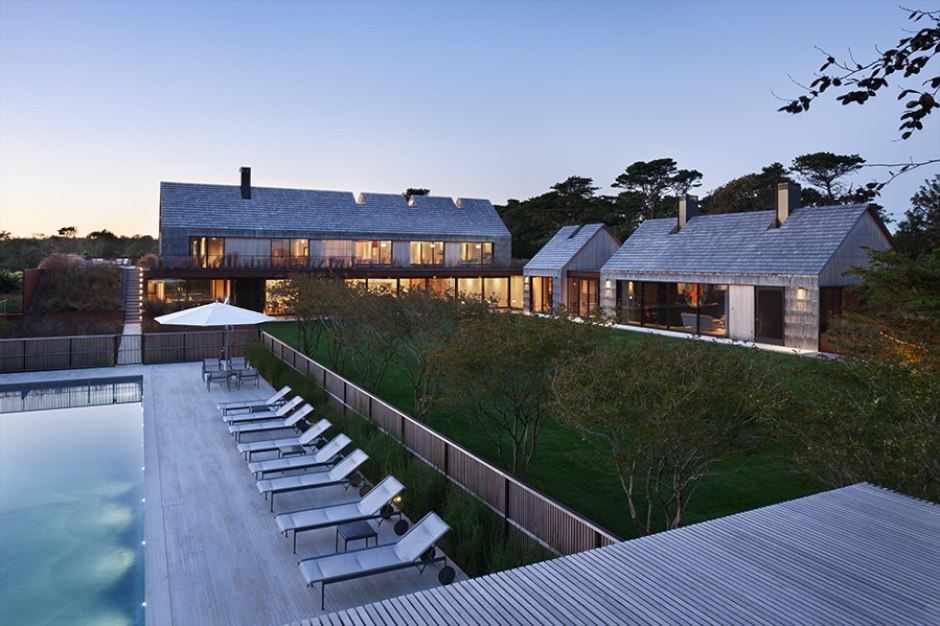
=================================================
Juror Award / Architecture
Erica Broberg, Architect
Project: Meeting House
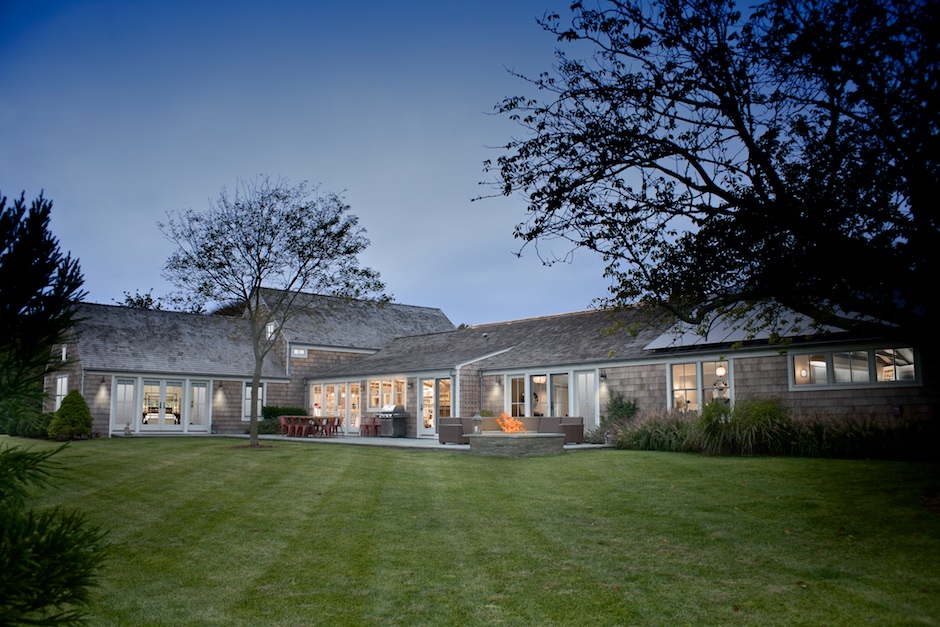
—————————————–
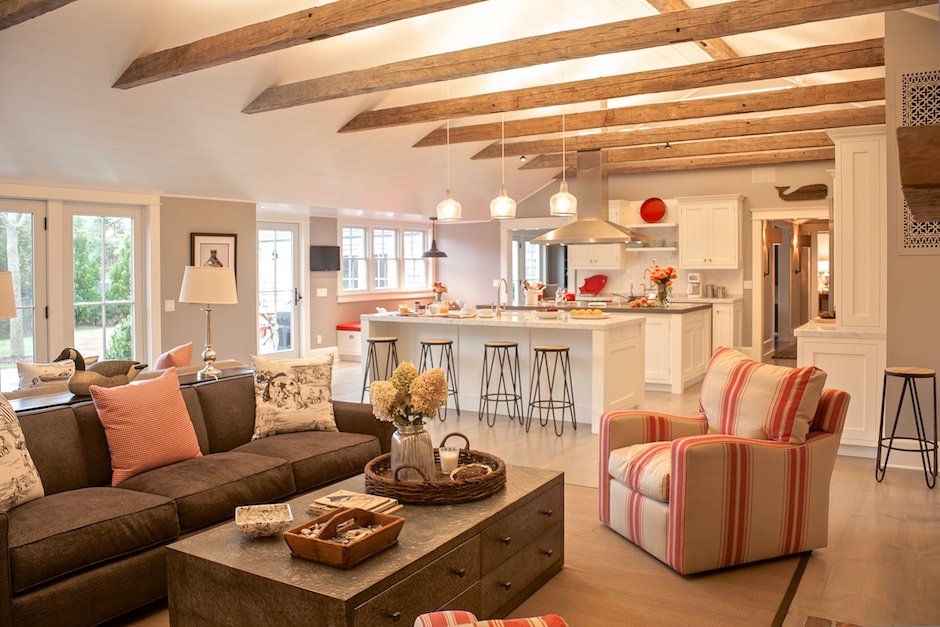
=================================================
Juror Award / Architecture
Siamek Samii, Architect
Project: Afr-Am Museum East End
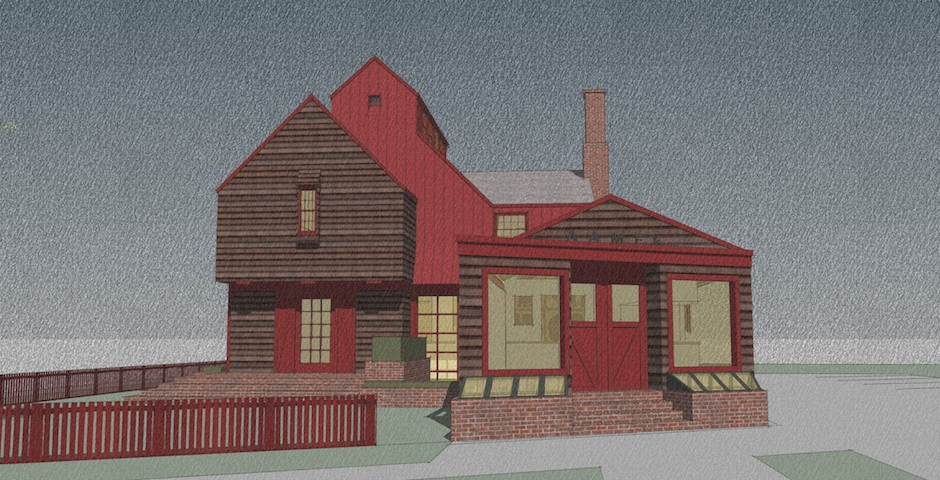
The African American Museum of the East End is conceived as a restoration and addition to an existing one-story frame building. The site is located in the Village of Southampton on North Sea Road Village entry corridor and Hillcrest Avenue intersection.
The two and a half story frame building will function as a community center and exhibition and research space documenting the life, history and trends of the east end African American community throughout its history, continuing to the present.
The vernacular typology of the building is of colonial heritage but dealt with as a cavernous open space on the interior, with ramps and stairs connecting the various volumes and levels under a multiplex of roofs and ridges. Construction is of traditional balloon wood frame resting on a brick and concrete foundation with a variety of shingle patterns and siding sheeting the exterior volumes. Design is currently in the development stages.
Credits & Contact Information listed at end of Album.

=============================================================================

_________________________________________________________________________________
AIA Peconic 2014 Architecture Awards Jurors
Annabelle Selldorf, FAIA Selldorf Architects www.selldorf.com
Randy Correll, AIA Robert A. M. Stern Architects www.ramsa.com
Richard A. Cook, FAIA Cookfox Architects www.cookfox.com
Thomas Phifer, AIA Thomas Phifer and Partners www.thomasphifer.com
__________________________________________________________________________________
ARCHITECTS — CONTACT INFORMATION — CREDITS
==========================================================
Honor Award / Architecture — Maziar Behrooz, Architect — Project: Arc House
www.mbarchitecture.com
==========================================================
Honor Award / Architecture — Roger Ferris, Architect — Project: Bay House
Architect: Roger Ferris + Partners, LLC — Structural Engineer: Robert Silman Associates — Civil Engineer: S.H.W.& S. Land Surveyors — M/E/P Engineer: D’Antonio Consulting Engineers — Photography: Paul Rivera of Arch Photo Inc.
==============================================================
Merit Award / Architecture — Bates + Masi Architects — Project: Elizabeth II
www.batesmasi.com
Photos: Bates Masi + Architects.
=================================================================
Merit Award / Architecture – Stelle Lomont Rouhani Architects — Project Casa Lama

www.stelleco.com
Credits: SLR Architects. Team: Frederick Stelle and Luca Campaiola. Photographer: Jose Hevia
=================================================================
Merit Award / Architecture — Maziar Behrooz, Architect — Project: Driftwood House
Project Team: Maziar Behrooz, Jeanie Fan, Travis Lydon, Danielle Lehmann
www.mbarchitecture.com
==============================================================
Merit Award / Architecture — Maziar Behrooz, Architect — Project: inst_house
Project Team: Maziar Behrooz, Travis Lydon, Jeanie Fan, Levi Shaw-Faber
www.mbarchitecture.com
========================================================================
Juror Award / Architecture — Bates + Masi Architects — Project: Pierson’s Way
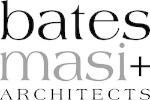
Architect: Bates Masi + Architects – Interior Designer: Damon Liss – General Contractor: Men at Work Construction – Landscape Architect: Bates Masi + Architects – Photographer: Michael Moran.
www.batesmasi.com
==============================================================
Juror Award / Architecture — Erica Broberg, Architect — Project: Meeting House
www.ericabrobergarchitect.com
==============================================================
Juror Award / Architecture — Siamek Samii, Architect — Project: Afr-Am Museum East End
Project in Development
siamaksamii.com
———————————————————————————–

www.aiapeconic.org
________________________________________________________________________________


